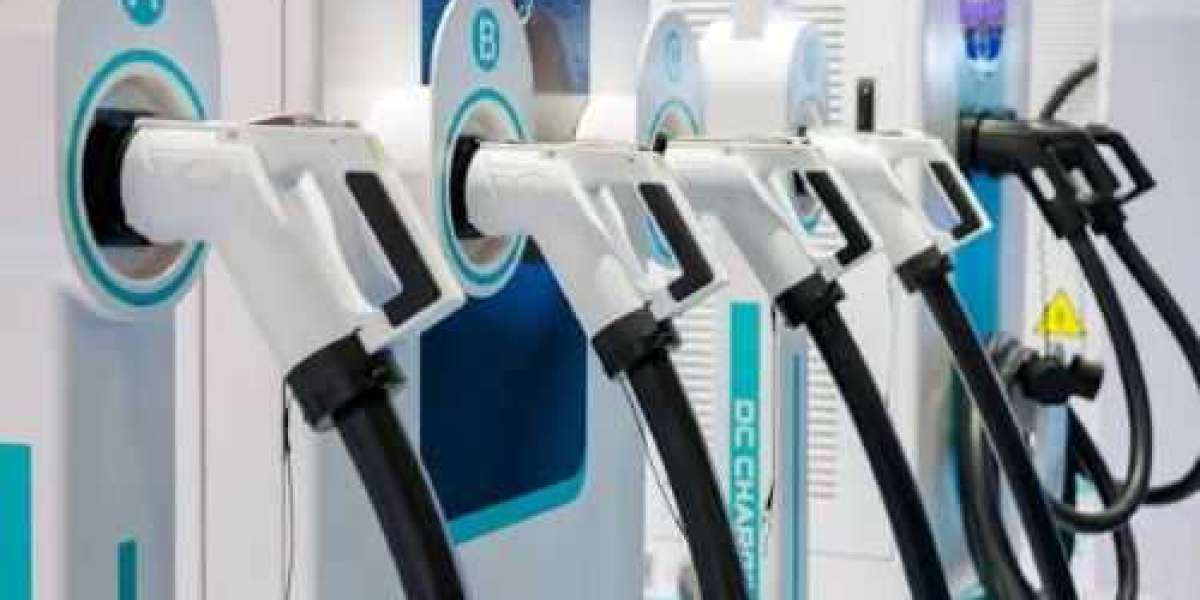The Need for Speed: Understanding DC Fast Charging for Electric Vehicles
Introduction: The Need for Speed in EV Charging
As electric vehicles (EVs) become mainstream, the demand for faster, more efficient charging grows stronger. Among the available options, DC fast charging—also called Level 3 charging—stands out as the most powerful and time-saving method. Designed for drivers on the go, these high-powered chargers dramatically reduce charging times, making them essential for long-distance travel and high-utilization fleets.
This article breaks down how DC fast chargers work, their benefits, compatibility considerations, and cost factors to help EV owners and industry professionals better navigate this crucial charging technology.
What Is a DC Fast Charger?
DC fast chargers deliver direct current (DC) power directly to the vehicle’s battery, bypassing the onboard AC-to-DC conversion required in Level 1 and Level 2 charging. By converting AC power from the grid to DC at the station itself, these chargers can supply much higher power levels—allowing EVs to charge far more quickly.
Level 1 charging (120V AC) can take over 20 hours for a full charge.
Level 2 charging (240V AC) typically takes 4 to 8 hours.
DC fast charging can recharge up to 80% of an EV battery in just 20 to 30 minutes—transforming the charging experience for road trips, commercial fleets, and busy drivers.
Connector Types and Charging Standards
Unlike the mostly universal AC charging plugs, DC fast charging uses different connectors depending on region and vehicle:
1. Combined Charging System (CCS)
Most widely adopted in Europe and North America.
Integrates AC and DC charging through the same inlet.
Known as CCS1 in North America and CCS2 in Europe.
Offers high power handling and flexibility—rapidly becoming the global default.
2. CHAdeMO
A Japanese standard, now gradually phased out in Western markets.
Requires a separate port for DC charging.
Typically limited to 50 kW output, making it less competitive versus CCS.
Still found on some older EVs like Nissan Leaf models.
3. Tesla Supercharger
Tesla uses a proprietary connector in North America but supports CCS in Europe.
Tesla’s network is increasingly open to non-Tesla EVs, often via adapters.
In summary: CCS is the clear global frontrunner for DC fast charging, while CHAdeMO is declining in relevance.
Vehicle Compatibility and Charging Speeds
Not all EVs charge equally fast on DC fast chargers. Key factors include:
Maximum Charging Rate: The peak kW your vehicle can accept. High-end models like the Hyundai IONIQ 5 or Porsche Taycan support up to 350 kW, while others max out at 50 or 100 kW.
Battery State of Charge (SOC): Charging slows as the battery nears full capacity, which is why charging speeds are often quoted from 20% to 80% SOC.
Thermal Management: Effective cooling systems allow sustained high-speed charging without overheating.
Note: Some small EVs (e.g., Fiat 500e) don’t support DC fast charging at all. Always verify your vehicle’s specs before using a DC fast charger.
Cost Considerations: Paying for Convenience
DC fast charging is typically more expensive than AC charging due to higher installation, maintenance, and operational costs, as well as premium convenience.
Common Pricing Models
Per minute: Pay for connection time, regardless of energy delivered.
Per kilowatt-hour (kWh): Pay based on actual energy charged.
Session or idle fees: Some networks charge flat session fees or penalties for leaving your vehicle plugged in after charging completes.
Matching Cost to Capability
If your EV maxes out at 50 kW but uses a 250 kW charger billed by time, you might pay premium rates without benefiting from ultra-fast speeds. Knowing your vehicle’s charging limits helps avoid unnecessary expense.
When to Use DC Fast Charging
DC fast charging is best reserved for specific situations, such as:
Long road trips: Minimize downtime between travel legs.
Fleet operations: Quick turnarounds boost productivity.
Emergency charging: Get a fast boost when battery levels are low.
Urban fast charging hubs: For those without home chargers, though frequent use may impact battery longevity.
For routine daily charging, Level 2 AC chargers remain the most economical and battery-friendly choice.
The Future of DC Fast Charging
Advances are underway to make DC fast charging even better:
Higher power chargers: 400–500 kW stations are emerging for next-gen EVs.
Battery buffer systems: On-site storage to smooth grid demand peaks.
Vehicle-to-Grid (V2G): Two-way energy flows enabling EVs to support the grid.
Expanded networks: More fast chargers along highways and underserved areas.
Final Thoughts: Is DC Fast Charging Right for You?
DC fast charging is transforming EV refueling—fast, powerful, and increasingly accessible. However, it’s not a one-size-fits-all solution. Before using a DC fast charger, consider:
Does your EV support DC fast charging?
What is your vehicle’s maximum DC charging rate?
Is the charger connector compatible with your car?
Are you being charged fairly based on your vehicle’s capability?
Used strategically, DC fast charging complements regular Level 2 charging by saving time on the road and in urgent situations. Understanding when and how to use it will help you get the most value and convenience from your electric vehicle.Know more about Google SEO Directory


